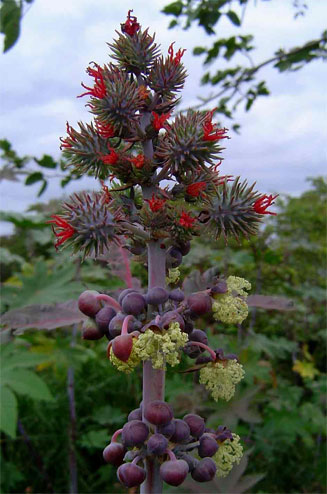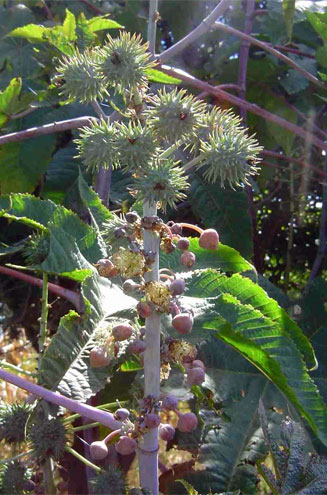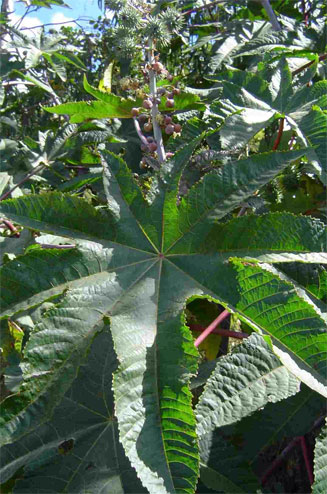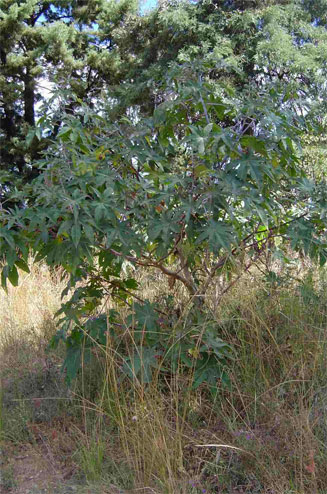Ricinus communis
(Castor oil plant) kasterolie [Afrikaans]
Life
> eukaryotes >
Archaeoplastida >
Chloroplastida
>
Charophyta > Streptophytina > Plantae (land plants)
> Tracheophyta (vascular plants) > Euphyllophyta > Lignophyta (woody plants)
> Spermatophyta (seed plants) > Angiospermae (flowering
plants) > Eudicotyledons > Core Eudicots > Rosids >
Eurosid I > Order: Malpighiales > Family: Euphorbiaceae
 |
 |
|
Ricinus communis, Hot Springs,
Save Valley, Zimbabwe. [photo Bart Wursten ©,
Flora of Zimbabwe]
|
Ricinus communis, road to
Domboshawa, Chinamora CL, Zimbabwe. [photo Bart Wursten ©,
Flora of Zimbabwe]
|
 |
 |
|
Ricinus communis, road to
Domboshawa, Chinamora CL, Zimbabwe. [photos Bart Wursten ©,
Flora of Zimbabwe]
|
Seeds are highly toxic because they contain a poisonous
substance called ricin. The oil from this plant does not contain ricin and is
commonly used as a purgative and emollient, or in creams, ointments, soaps and
lipstick.
Publications
-
van Wyk, B.-E. & Gericke, N. 2000. People's
Plants. A Guide to Useful Plants of Southern Africa. Briza Publications,
Pretoria.
|
